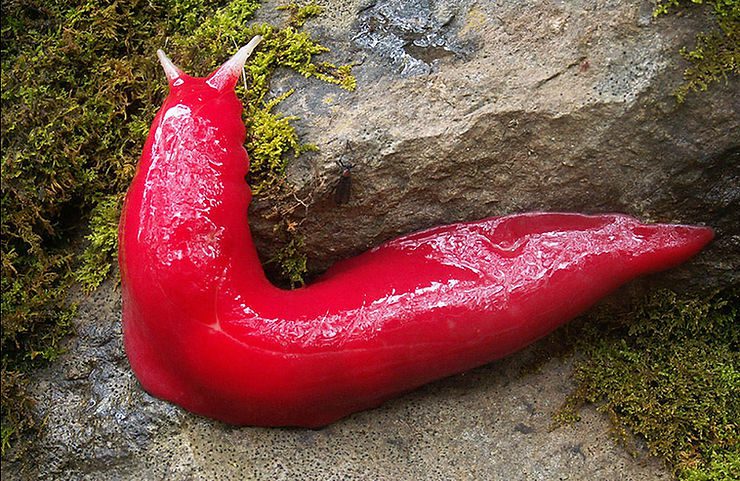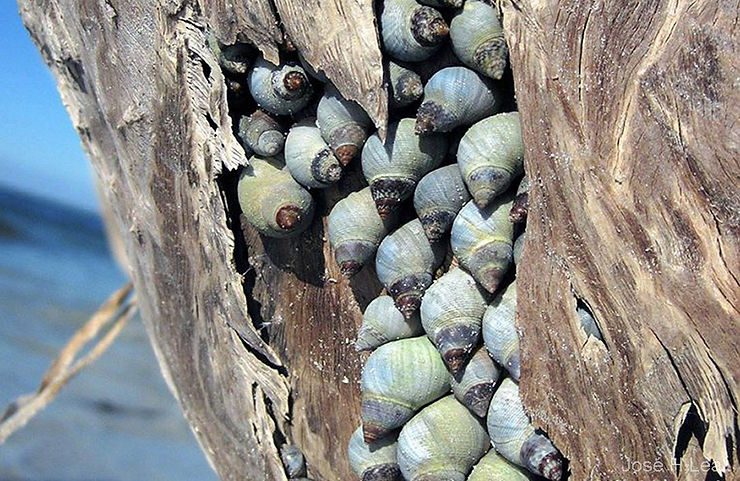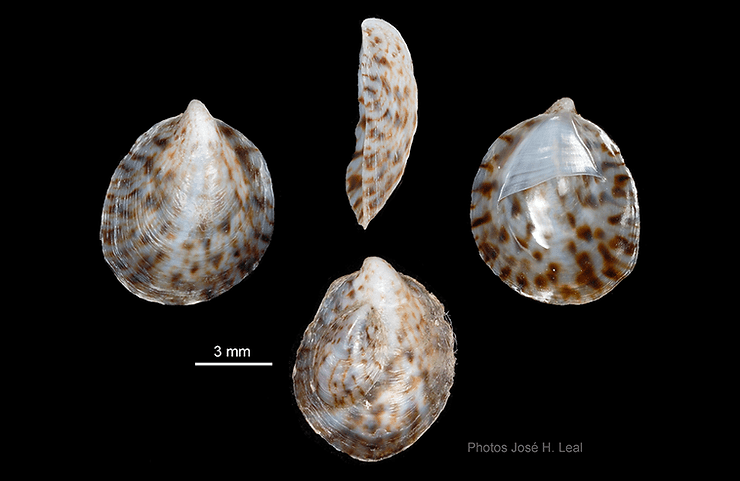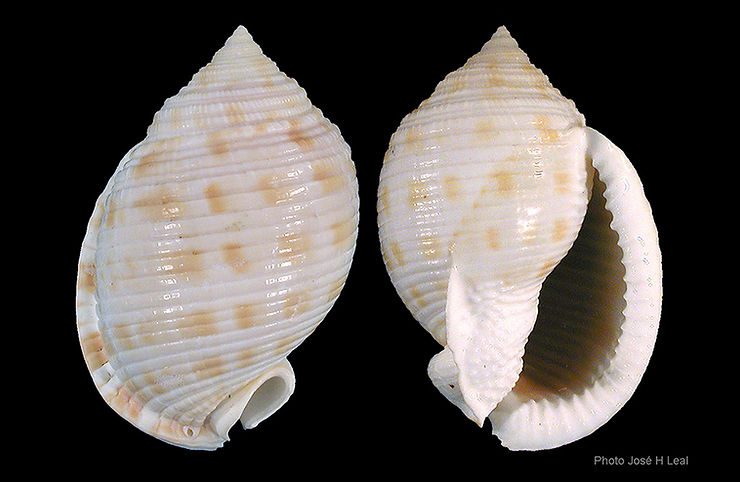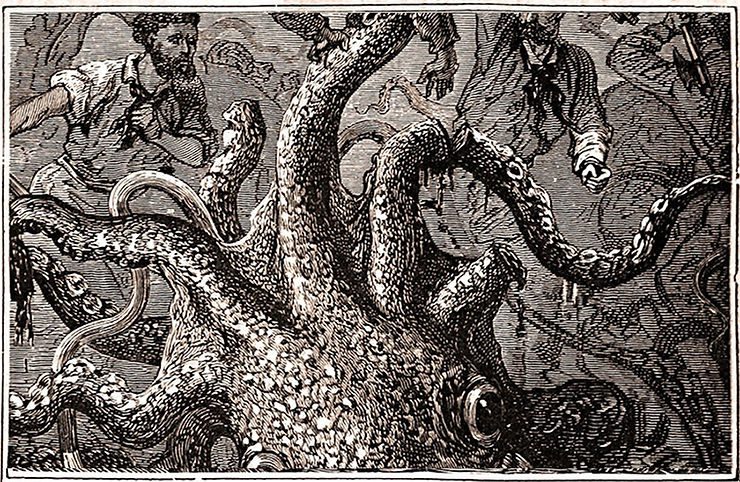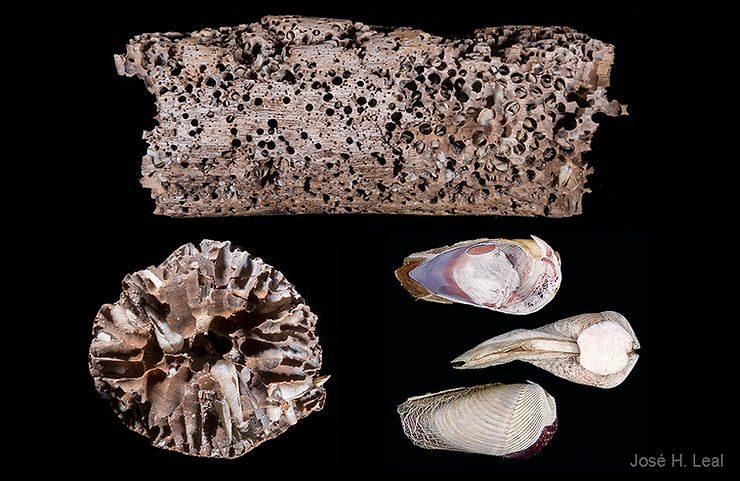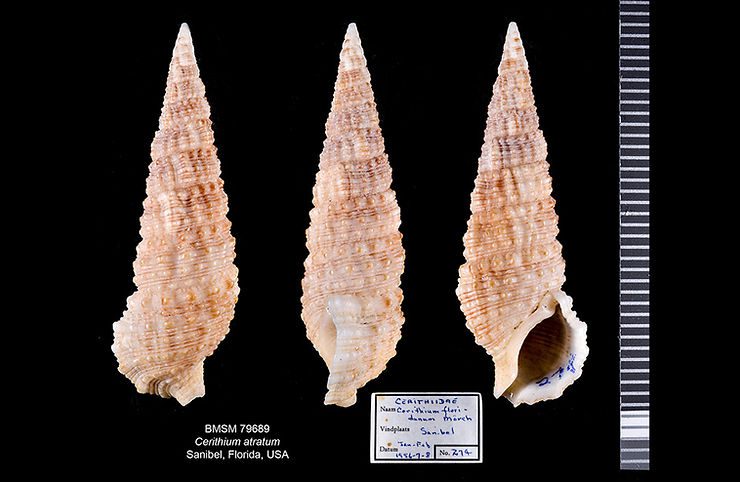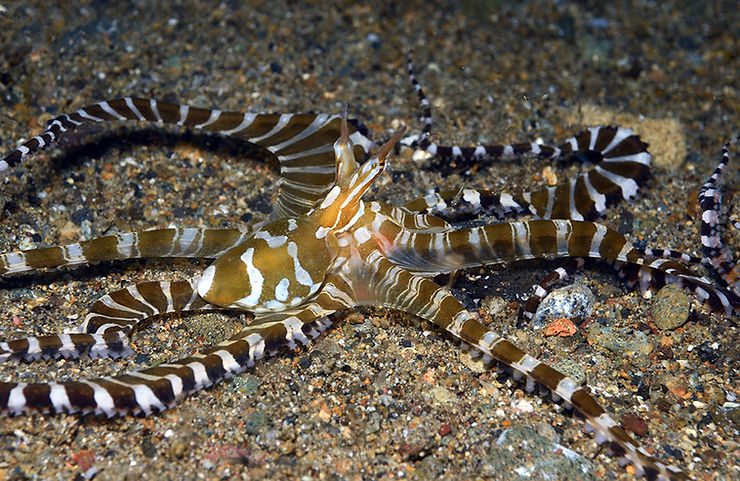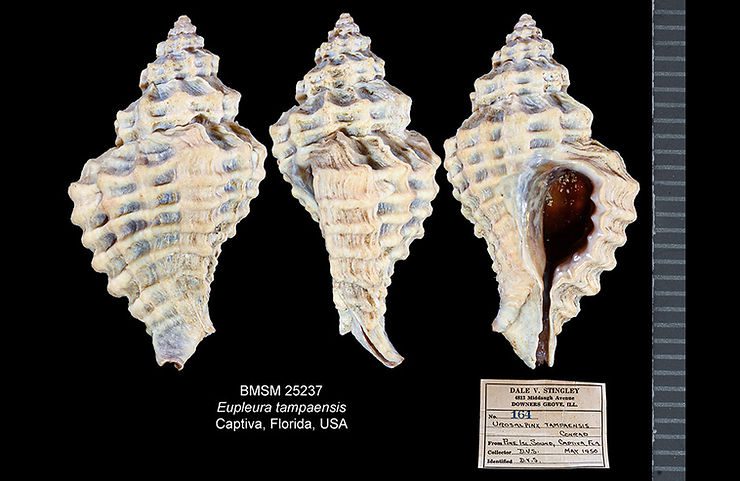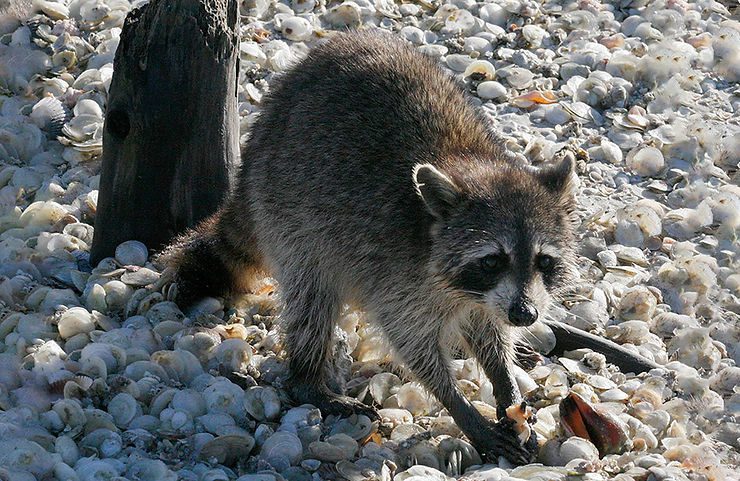
Fighting-Conch Sushi?
Northern Racoons, Procyon lotor (Linnaeus, 1758), eat mollusks and other types of shellfish. (The "other" racoon species, Procyon cancrivorus (Cuvier, 1798), found in Central and South America, is named after similar, crab-eating habits.) The young racoon in this cool photo was caught red-handed, half-way through a meal of Florida Fighting Conch, Strombus alatus (Gmelin, 1791). The image is by National Shell Museum collaborator Amy Tripp, who captured the moment at low tide on Kice Island, Flor
